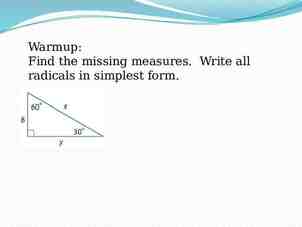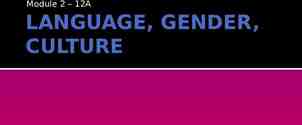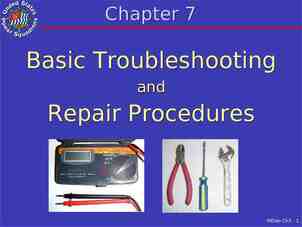CRIME SCENE INVESTIGATION
23 Slides1.33 MB

CRIME SCENE INVESTIGATION

LOCARD’S EXCHANGE PRINCIPLE Locard’s Principle is the reason for investigation of a crime scene. It is impossible for a criminal to act without leaving traces of this presence. With contact between two items, there will be an exchange

CRIME MUST OCCUR BEFORE A PERSON CAN BE CONVICTED OF THE CRIME. Must prove: that a crime occurred that the person charged with the crime was responsible for the crime Must determine: Primary Crime Scene Secondary Crime Scene(s) Must Identify Source(s) of Evidence Victim’s Body Primary and/or Secondary Crime Scene Suspect(s) Body

CRIME SCENE Primary Crime Scene – location where the crime took place Example: Bank where armed robbery took place Secondary Crime Scene – additional locations which are related to the crime and may provide some measurable amount of physical evidence Example: Get away car and garage where car was found

CRIME SCENE INVESTIGATION Involves 4 Steps: Recognition—scene survey, documentation, collection Identification—classification of evidence Individualization—comparison testing, evaluation, and interpretation Reconstruction—sequencing events, reporting, and presenting 5

TYPES OF EVIDENCE Testimonial (Direct evidence) firsthand observations: eyewitness accounts dashboard video cameras confessions

TYPES OF EVIDENCE Circumstantial (indirect evidence) used to imply but not prove a fact may link a suspect and a crime scene ex. Suspect’s gun found at crime scene Physical: Biological : Impressions, fibers, weapons, bullets, shell casings may make group of suspects very small or even one individual reduces number of suspects to group Body fluids, hair, plant parts, natural fibers

CRIME SCENE INVESTIGATION TEAM: Police Officers: usually first at the scene Recorder (notetaker) Photographers Sketch artist Crime Scene Investigators: document the crime and collect physical evidence Evidence Technicians: aid in collection and packaging the crime scene evidence Medical Examiners: may be necessary to determine cause of death in a homicide case Detectives: look for leads, interview witnesses and talking to the CSI about evidence Specialists: entomologists, psychologists, etc

FIRST OFFICER ON THE SCENE To an officer ADAPT means A Assess the crime scene and assist the injured – Safety 1ST priority D Detain the witness A Arrest the perpetrator P Protect the crime scene T Take notes 9

FIRST OFFICER ON THE SCENE Observe persons and vehicles near the scene as well as smells and sounds Note the time, address and weather conditions Conduct a brief walk through of the scene and determine if medical assistance is necessary Call for CSI Secure and Isolate the scene- must establish perimeter security especially to control the media

THE NOTE TAKER The note taker should record everything that happens during the crime scene investigation. The notes should include the location & weather, type of crime, time of discovery, & name of discoverer the date, times and names for anyone entering or exiting the crime scene. Make notes in ink , with pages numbered sequentially. Make notations in chronological order.

THE PHOTOGRAPHER The first photographs that are taken should show an overview of the scene from many different perspectives followed by close up photos of individual pieces of evidence. Can never take too many photos of a crime scene. There may be 200-500 shots taken from every possible angle of view. Victims and evidence must not be moved until they have been photographed from all necessary angles.

THE PHOTOGRAPHER The evidence technicians will place markers and rulers next to the evidence before the photographer will photograph the evidence Physical evidence is photographed with a ruler to show it’s size and also it’s location relative to the entire scene. Photographer must keep a photo log of all pictures taken

THE POLICE ARTIST The police artist is responsible for the crime scene sketch. A rough sketch is drawn at the scene and the final sketch is created at the police station

THE SKETCH A sketch provides accurate measurements and distances between objects. The final sketch is drawn to scale using templates, etc.

OTHER RESPONSIBILITIES OF THE SKETCH ARTIST INCLUDE Creating composite drawings of any suspects These composites may be drawn by hand or computer generated

THE MEDICAL EXAMINER When a victim is deceased, the Medical Examiner or a representative from the ME’s office will be responsible for retrieving the body from the scene. Photographs and a body temperature will be taken. The hands may be bagged and then the body is placed into a clean body bag.

THE DETECTIVE WILL 1. Interview witnesses 2. Take statements 3. Verify the truth of the statements 4. Determine the motive, means and opportunity for each suspect 5. Seek additional information 6. Charge and arrest suspects 7. Testify in court.

EVIDENCE TECHNICIANS Sets up numbers at the pieces of evidence Obtains the necessary equipment for collecting and packaging evidence Properly collects all evidence

COLLECTING AND PACKAGING EVIDENCE Each item must be placed in a separate container, sealed, and labeled Most fragile is collected and packaged first Different types of evidence require specific or special collection and packaging techniques The body is the property of the coroner or medical examiner. The collection of evidence on the body is done by that department

PACKAGING Most items should be packaged in a primary container and then placed inside a secondary one. These are then placed inside other containers such as paper bags, plastic bags, canisters, packets and envelopes depending on the type and size of the evidence.

CHAIN OF CUSTODY There must be a written record of all people who have had possession of an item of evidence. The evidence container must be marked for identification The collector’s initials should be placed on the seal If evidence is turned over to another person, the transfer must be recorded.







